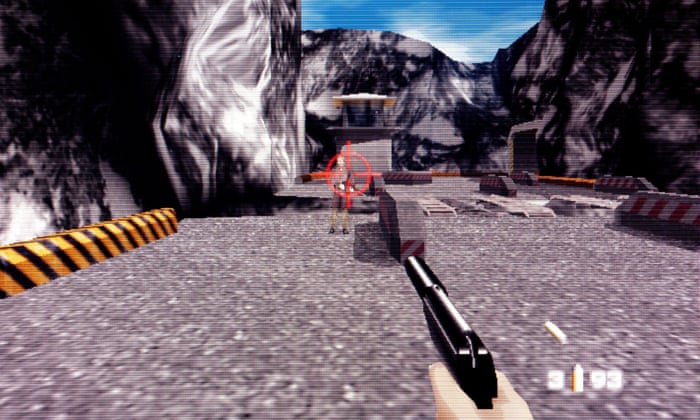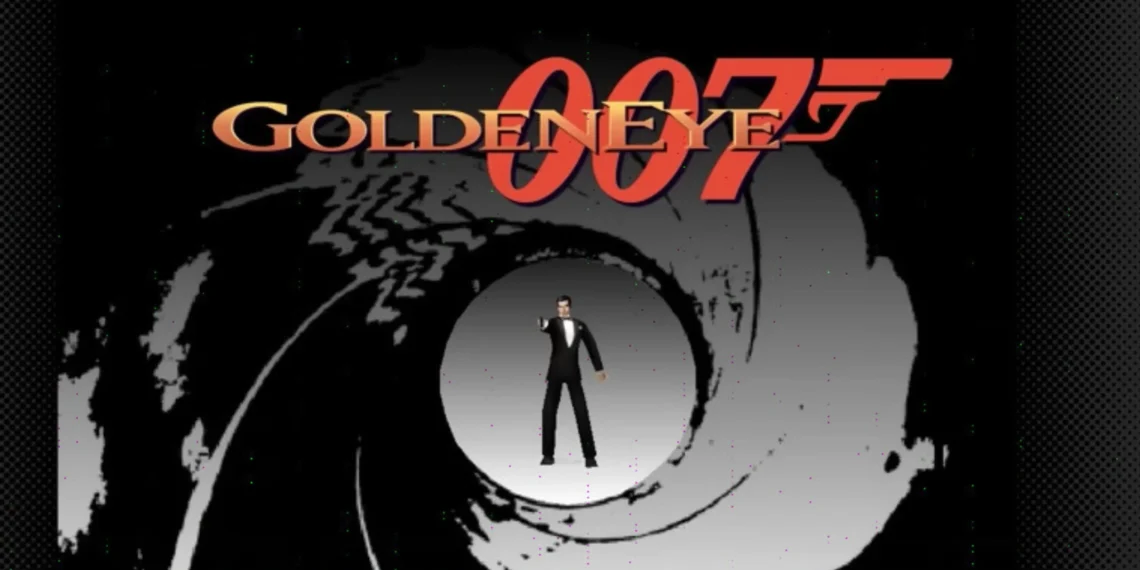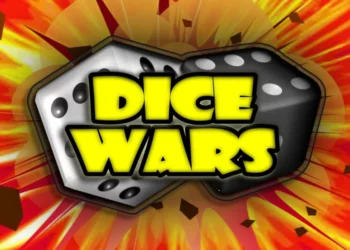In 1997, the gaming world was forever changed with the release of GoldenEye 007 on the Nintendo 64. What began as a movie tie-in turned into one of the most revolutionary titles in video game history. Developed by Rare, GoldenEye 007 didn’t just follow the footsteps of the James Bond franchise—it redefined what console shooters could be.
Before this game, the first-person shooter genre was largely confined to PCs. Titles like Doom and Quake dominated the landscape, while consoles struggled to offer the same precision and depth. GoldenEye 007 shattered that barrier. It introduced players to cinematic missions, stealth mechanics, and multiplayer experiences that would shape the future of gaming for decades to come.
This wasn’t just a game. It was an experience—an introduction to a new kind of storytelling and gameplay synergy that captured the imagination of millions.
From Silver Screen to Cartridge
The story of GoldenEye 007 begins in an unexpected way. Rare, the British development studio known for creative hits like Donkey Kong Country, was initially given a modest task: create a simple video game adaptation of the James Bond movie GoldenEye. What started as a 2D side-scroller concept for the Super Nintendo quickly evolved into a bold 3D shooter project for the new Nintendo 64 console.
The team at Rare consisted mostly of young, first-time developers. Without strict expectations or oversight, they were given creative freedom to experiment. That freedom led to innovation. The developers wanted to capture not just the action of James Bond, but the sophistication, style, and espionage that defined the character.
From day one, GoldenEye 007 was designed to feel cinematic. Players weren’t simply “shooting enemies.” They were infiltrating bases, completing covert missions, and uncovering secrets—all within richly detailed environments inspired by the film’s settings. Each mission felt like a scene from a spy thriller, with objectives that demanded strategy, timing, and finesse.
Breaking the FPS Barrier on Console
Before GoldenEye 007, first-person shooters were considered too complex for consoles. The lack of a keyboard and mouse made precision aiming difficult, and developers had yet to master the use of analog sticks. Rare changed that forever.
The team created an innovative control scheme that perfectly utilized the Nintendo 64’s unique controller. Players could move with the analog stick, aim with accuracy, and interact with their environment naturally. It felt smooth, responsive, and, for its time, revolutionary.
But the innovation didn’t stop there. The level design in GoldenEye 007 was unlike anything seen before on a console. Missions featured multiple objectives, branching paths, and dynamic challenges. Rather than linear corridors, players navigated expansive environments such as the Dam, Facility, and Bunker—each filled with secrets and interactive elements.
The game also introduced stealth mechanics rarely seen in shooters of the era. You could complete missions without alerting guards, use silencers for quiet takedowns, and plan your approach carefully. This balance between stealth and action gave players a sense of agency rarely found in console games.
Enemy AI was another leap forward. Guards reacted to sound, sight, and gunfire, often calling for reinforcements if you made too much noise. This attention to detail made each mission feel alive, unpredictable, and rewarding to master.

Multiplayer Mayhem and Couch Rivalries
If there’s one feature that truly cemented GoldenEye 007 in gaming history, it’s the multiplayer mode. Ironically, it was added late in development, almost as an experiment. Yet it became the heartbeat of the game’s legacy.
The four-player split-screen mode transformed living rooms into battlegrounds. Friends could select their favorite Bond characters—whether it was the sleek agent himself, Natalya, or the infamous Oddjob—and face off in chaotic, laughter-filled matches. The arenas, such as the Temple, Facility, and Complex, became legendary.
This local multiplayer experience changed how people socialized around games. Before online play was commonplace, GoldenEye 007 turned console gaming into a shared event. It created memories, rivalries, and friendships that lasted long after the console was turned off.
Rules were simple: “No Oddjob,” “Pistols only,” or “License to Kill.” These self-imposed guidelines became cultural touchstones for a generation of players.
The multiplayer design was pure brilliance—accessible yet competitive, fun for casuals but deep enough for experts. It was the foundation upon which future console shooters would build their online experiences.
Technical and Artistic Brilliance
Beyond gameplay, GoldenEye 007 was a technical triumph. The Nintendo 64 hardware was limited, but Rare’s developers managed to push it to impressive heights.
The game’s visuals captured cinematic atmosphere through smart use of lighting, textures, and camera angles. Environments felt realistic and immersive, from snow-covered satellite bases to shadowy corridors. The team used clever programming to optimize performance while maintaining detail.
Audio design also played a key role in immersion. The game’s soundtrack, composed by Graeme Norgate, Grant Kirkhope, and Robin Beanland, reimagined the classic James Bond theme with modern flair. Each mission carried its own musical identity, blending tension, mystery, and triumph. Sound effects, from silenced gunfire to echoing footsteps, amplified the sense of realism.
Even small touches—like guards dropping weapons or alarms blaring after detection—helped create a living, breathing world that felt far ahead of its time.
Critical Success and Cultural Impact
When GoldenEye 007 launched in August 1997, expectations were low. Movie-based games rarely performed well, and the first-person shooter genre was considered niche for console players. But the game defied all odds.
Critics praised its depth, mechanics, and replayability. Players loved how it balanced serious espionage with high-octane action. Reviewers highlighted its smart AI, diverse missions, and, of course, the groundbreaking multiplayer.
GoldenEye 007 sold over eight million copies worldwide, becoming one of the best-selling games on the Nintendo 64. It won numerous awards, including multiple “Game of the Year” honors, and remains one of the most critically acclaimed titles of the 1990s.
Most importantly, it proved that console shooters could be intelligent, cinematic, and technically impressive—all at once.
Influence on Future Games
GoldenEye 007 didn’t just change gaming—it inspired an entire generation of developers. The control layout, mission design, and multiplayer formula became templates for future titles.
Games like Halo: Combat Evolved, Perfect Dark, and Call of Duty built upon the foundation that GoldenEye established. Its success demonstrated that console shooters could rival PC experiences in both quality and engagement.
Rare even followed up with Perfect Dark in 2000, a spiritual successor that expanded on everything GoldenEye introduced. It incorporated advanced AI, improved visuals, and new multiplayer options—all thanks to the groundwork laid by GoldenEye 007.
Beyond technical influence, the game also reshaped player culture. It bridged the gap between single-player storytelling and social competition, showing that video games could be both personal and communal experiences.
The Legacy Lives On
Decades later, GoldenEye 007 remains a cultural icon. Its influence can still be seen across modern shooters and even in the way players approach gaming today.
The title has been re-released and remastered multiple times, yet its original version still holds a special place in gaming history. Fans continue to host retro tournaments, speedruns, and nostalgic sessions celebrating its timeless charm.
Developers from across the industry often cite GoldenEye 007 as the game that inspired them to create. It taught the world that even a licensed title could reach the heights of innovation when crafted with creativity and passion.
From its stealth missions to its split-screen chaos, every element of GoldenEye 007 was ahead of its time. It didn’t just adapt a movie—it redefined a genre.
Why GoldenEye 007 Still Matters
Even in today’s era of ultra-realistic graphics and online multiplayer dominance, GoldenEye 007 stands tall as a benchmark of great design.
Its lessons in pacing, balance, and creativity remain relevant. The game respected the player’s intelligence, encouraging experimentation rather than hand-holding. Its simplicity, paired with strategic depth, created a timeless formula that modern developers still strive to replicate.
Nostalgia also plays a role, of course. For many, the sound of the GoldenEye 007 theme brings back memories of late-night sessions, laughter with friends, and the thrill of discovering new secrets. It’s more than nostalgia—it’s a reminder of when gaming was about imagination and connection.
GoldenEye 007 was more than entertainment. It was an event, a social gathering, and a glimpse into what video games could become.
Conclusion
GoldenEye 007 is not just a game—it’s a turning point in video game history. It redefined what was possible on consoles, blending cinematic storytelling with groundbreaking gameplay mechanics. Its influence continues to shape how developers design shooters, and its multiplayer remains one of the most cherished memories in gaming culture.
It gave players the feeling of being James Bond—cool, capable, and unstoppable. But more than that, it gave them the tools to create their own stories, their own rivalries, and their own moments of triumph.
Nearly three decades later, the impact of GoldenEye 007 still resonates. Every modern shooter owes something to that cartridge. And every gamer who’s ever said, “No Oddjob!” knows they’re part of a legacy that began with a single mission: to make something extraordinary.
Also read :Time Shooter 2: A Brilliant Mix of Strategy, Reflex, and Slow-Motion Chaos















